Optimization of steam humidity measurement inversion algorithm based on back angle scattering method
-
摘要: 为了精准测量汽轮机末级蒸汽湿度,提出在激光后向异轴角散射法的基础上建立蒸汽湿度测量模型和湿蒸汽参数反演优化模型。根据该优化模型采用粒子群算法对加入高斯白噪声的仿真数据和模拟汽缸的实验数据进行反演寻优,并将得到的反演结果与人工鱼群算法和传统的均匀搜索方法进行了对比。采用粒子群算法时r0.5、K、N的反演结果误差为0.05、0.66和0.51%,反演时间为306.41 s;采用鱼群算法时r0.5、K、N的反演结果误差为2.96、19.98和4.68%,反演时间为411.05 s;采用均匀搜索算法时r0.5、K、N的反演结果误差为5.00、27.14和7.95%,反演时间为246.42 s。结果表明:粒子群算法能够克服人工鱼群算法和均匀搜索方法两者的不足,可以在较短时间内获得精度高且稳定可靠的反演结果,为湿蒸汽参数测量提供了更加准确的数据,并对其他颗粒物参数测量反演提供了理论依据。Abstract: A steam humidity measurement model and a wet steam parameter inversion optimization model were established based on the laser back-axis angular scattering method in order to measure the steam trubine humidity at the final stage accurately. According to the optimization models, the particle swarm optimization (PSO)algorithm was used to perform multiple inversion optimizations on the simulation data which was added the Gaussian white noise and the experimental data of the simulated cylinder. The obtained inversion results were compared with the artificial fish-swarm algorithm and the traditional uniform search method as well. When the PSO algorithm was used, the inversion results of r0.5, K and N were 0.05, 0.66 and 0.51% respectively, the inversion time was 306.41 s. When the artificial fish-swarm algorithm was used, the inversion results of r0.5, K and N were 2.96, 19.98 and 4.68% respectively, the inversion time was 411.05 s. When the uniform search algorithm was used, the inversion results of r0.5, K and N were 5.00, 27.14 and 7.95% respectively, the inversion time was 246.42 s. The results show that the PSO algorithm can overcome the shortcomings of both artificial fish-swarm algorithm and uniform search method, which can obtain high precision, stable and reliable inversion results in a short time. It provides more accurate data for wet steam parameter measurement and theoretical basis for other particle parameter measurement inversions.
-
引言
低温辐射计已逐渐成为光度、光谱光度、光谱辐射度和激光功率、能量计量的基准,被许多国家标准实验室作为光度学和辐射度学的最高标准[1]。低温辐射计系统结构复杂,运行维护条件要求高,且移动不便,因此以低温辐射计为基准的量值传递是通过标定探测器绝对光谱响应度实现的[2-4]。同时随着紫外探测技术的发展,对紫外探测器的要求越来越高,因此精确测量紫外探测器的绝对光谱响应度[5-10]是非常必要的。
目前探测器绝对光谱响应度标定方法主要有两种,其一是用低温辐射计标定出探测器在某个特定波长的绝对光谱响应[11-14],然后在相对光谱响应装置上标定探测器全波段的相对光谱响应,这样可以根据已知一点的绝对光谱响应和探测器的相对光谱响应求得探测器的绝对光谱响应度;其二是在多个激光波长上用低温辐射计标定出探测器的绝对光谱响应,然后其它波长的绝对光谱响应度可以内插得到[15]。这两种测量方法均受激光波长的限制,在115 nm~200 nm无法实现连续波长条件下探测器绝对光谱响应度的测量,在200 nm~400 nm目前中国计量科学研究院探测器绝对光谱响应度测量不确定度为18%~1.2%。随着低温辐射计灵敏度的提高,出现直接使用单色仪出射的单色光作为光源实现低温辐射计标定探测器绝对光谱响应度的方法,但该方法不能消除布儒斯特窗口对测量结果的影响,无法同时实现偏振光和非偏振光条件下探测器绝对光谱响应度的标定。
为解决以上问题,本文对现有低温辐射计进行性能提升,设计了真空多光路切换系统,同时采用Y型真空比较通道,消除了布儒斯特窗口对测量结果的影响,在保证真空舱内超高真空环境不被破坏的前提下,实现偏振光和非偏振光条件下探测器绝对光谱响应度的标定。该方法拓展了光谱适用范围及偏振态适用范围,实现了115 nm~400 nm连续波长条件下紫外探测器绝对光谱响应度的准确标定。
1 系统组成和工作原理
1.1 工作原理
利用低温辐射计接收紫外单色辐射的功率,然后通过弧形轨道使紫外传递标准硅陷阱探测器接收紫外单色辐射得到输出信号,则紫外传递标准硅陷阱探测器的绝对光谱响应度由(1)式给出:
$$ {\text{S}}\left( \lambda \right) = \frac{{{i}(\lambda )}}{{P(\lambda )}} $$ (1) 式中:$ S\left( \lambda \right) $为紫外传递标准硅陷阱探测器的绝对光谱响应度;$ P\left( \lambda \right) $为低温辐射计接收的紫外单色辐射的功率;$ i\left( \lambda \right) $为紫外传递标准硅陷阱探测器输出信号。
采用替代法,在保持标准装置中单色辐射不变的情况下,由紫外传递标准硅陷阱探测器和紫外传递标准硅探测器分别接收单色辐射,则紫外传递标准硅探测器的绝对光谱响应度由(2)式给出:
$$ {S_t}\left( \lambda \right) = \frac{{{i_t}\left( \lambda \right)}}{{i\left( \lambda \right)}} \cdot S\left( \lambda \right) $$ (2) 式中:$ {S_t}\left( \lambda \right) $为紫外传递标准硅探测器的绝对光谱响应度;$ i\left( \lambda \right) $为紫外传递标准硅陷阱探测器输出信号;$ {i_t} \left( \lambda \right) $为紫外传递标准硅探测器输出信号;$ S\left( \lambda \right) $为紫外传递标准硅陷阱探测器的绝对光谱响应度。该比较法同样适用于紫外传递标准硅探测器对被测紫外探测器绝对光谱响应度的校准。
1.2 系统组成
基于低温辐射计的紫外波段绝对光谱响应度标准装置组成如图1所示,标准装置安装在光学平台上,主要由真空紫外连续可调单色辐射源、激光驱动紫外可调单色辐射源、系列激光源、真空多光路切换组件、Y型真空比较通道、探测器真空舱、低温辐射计、传递标准紫外增强硅陷阱探测器等组成。
在115 nm~230 nm波段,采用基于单色仪分光的真空紫外连续可调单色辐射源作为紫外光源,在230 nm~400 nm波段,采用激光驱动紫外可调单色辐射源作为紫外光源。真空紫外连续可调单色辐射源或激光驱动紫外可调单色辐射源出射的紫外单色辐射入射到低温辐射计吸收腔内,低温辐射计测量辐射功率,然后通过Y型真空比较通道旋转将传递标准探测器或被校准探测器切换进入光路,由传递标准探测器或被校准探测器测量,传递标准探测器或被校准探测器将光信号转换成电信号,电压表测量得到电信号的电压,从而得到传递标准探测器或被校准探测器的光谱响应度。
2 分系统设计
2.1 紫外单色光源系统设计
2.1.1 真空紫外连续可调单色辐射源系统
在工作波长小于230 nm时,使用真空紫外连续可调单色辐射源系统实现低温辐射计对紫外传递标准陷阱探测器标定、紫外传递标准陷阱探测器对紫外传递标准硅探测器的标定以及紫外传递标准探测器对被测探测器的标定。真空紫外连续可调单色辐射源系统由光源系统、输入光学系统、分光系统、输出光学系统组成,如图2所示。真空紫外连续可调单色辐射源系统中各系统均安装在各自的真空室内,各真空室之间通过法兰等结构件连接,真空度可达10−6 Torr。
2.1.2 系列激光光源系统
系列激光光源系统主要由476 nm激光器及激光稳功率系统、488 nm激光器及激光稳功率系统、532 nm激光器及激光稳功率系统组成,激光器经过激光稳功率系统后功率稳定性优于0.05%。激光稳功率系统由激光稳功仪和空间滤波系统组成,如图3所示。其中激光稳功仪主要由外置的起偏器、电光调制器、内置的检偏器、分束镜、反馈探测器和伺服放大系统组成。稳功仪经过分束镜对输出激光进行取样,大约3%的输出激光提供给反馈探测器,激光稳功率控制器将其输出与需稳定的信号比较,经差分放大后控制电光调制器,维持激光功率的稳定性。输出的激光再经过空间滤波器和2~3个精密孔径光阑成为功率稳定、光束质量优良的激光。
2.1.3 激光驱动紫外可调单色辐射源系统
在工作波长大于230 nm时,使用激光驱动紫外可调单色辐射源实现低温辐射计对紫外传递标准陷阱探测器标定、紫外传递标准陷阱探测器对紫外传递标准硅探测器的标定以及紫外传递标准硅探测器对被测探测器的标定。激光驱动紫外可调单色辐射源由激光驱动宽光谱光源系统、分光系统、准直光学系统组成,如图4所示。
2.2 真空多光路切换系统
真空多光路切换系统如图5所示,由布儒斯特真空窗口、法兰真空窗口、平板玻璃真空窗口及光路切换机构组成。布儒斯特真空窗口用于入射激光组输出的激光,布儒斯特窗口是经过磨、抛光后形成相互平行的2个表面的光学玻璃片,选用石英布儒斯特窗口;法兰真空窗口通过法兰直接与真空紫外-紫外单色仪连接,用于入射真空紫外-紫外单色光;平板玻璃真空窗口用于入射紫外单色光;光路切换机构由旋转导入控制台、平面旋转控制台、超高真空穿舱结构和平面反射镜组成,旋转导入控制台控制平面反射镜上升或下降,平面旋转控制台控制平面反射镜进行左右旋转,超高真空穿舱结构保证旋转导入控制台、平面旋转控制台在外界的连接器不会产生漏气,光路切换机构通过对平面反射镜的角度和高度的调节,实现真空环境下3个光路的快速切换。
2.3 Y型比较通道
Y型真空仓的一字端与真空紫外-紫外单色辐射源系统连接,Y型真空仓的分支分别与低温辐射计和探测器真空仓连接。Y型真空仓主要是由Y型真空腔、真空机组、探测器真空仓、运动控制部件组成,如图6所示。真空仓有机械泵和分子泵两级抽真空机组,使仓的真空度达到10−6 Torr,提供低温辐射计和探测器工作的高真空环境;探测器真空仓中装有待校准的传递标准探测器,通过磁流体电机控制其平移;运动控制部分通过精密电机控制低温辐射计和传递探测器分时切入校准光路,实现传递标准探测器相对于低温辐射计的绝对定标。Y型真空仓的设计使得低温辐射计校准传递标准探测器时,校准光路消除了低温辐射计窗口反射损耗引入的不确定性。
2.4 探测器系统设计
探测器系统由斩波器、监视探测器、紫外传递标准探测器组及其支架、被校准探测器及其支架、一维电动平移台等组成,斩波器、监视探测器、紫外传递标准探测器组、一维电动平移台均安装在探测器真空仓中,如图7所示。根据测量探测器需要由计算机控制磁流体电机控制一维移动平台移动将所需探测器移入测量光路。
3 测量结果及不确定度分析
3.1 测量结果
采用本文所述基于低温辐射计的紫外波段绝对光谱响应度标准装置对美国McPherson紫外硅增强型探测器在115 nm~230 nm绝对光谱响应度进行测试,结果如表1所示。
表 1 紫外硅增强型探测器115 nm~230 nm绝对光谱响应度测试结果Table 1. Absolute spectral responsivity test results of UV-enhanced silicon detector from 115 nm to 230 nm波长/nm 测量结果/(A/W) 波长/nm 测量结果/(A/W) 115 0.173 6 195 0.082 8 135 0.146 5 215 0.078 3 155 0.120 1 230 0.080 2 175 0.094 1 — — 对美国NIST紫外硅增强型探测器在230 nm~400 nm绝对光谱响应度进行测试,结果如表2所示。
表 2 紫外硅增强型探测器230 nm~400 nm绝对光谱响应度测试结果Table 2. Absolute spectral responsivity test results of UV-enhanced silicon detector from 230nm to 400 nm波长/nm 测量结果/(A/W) 波长/nm 测量结果/(A/W) 230 0.082 5 330 0.131 7 250 0.108 9 350 0.127 5 270 0.112 3 370 0.128 1 290 0.127 7 390 0.147 2 310 0.136 5 400 0.159 5 3.2 不确定度分析
本装置设计了多光源切换系统,在115 nm~230 nm和230 nm~400 nm波段,分别采用基于单色仪分光的真空紫外连续可调单色辐射源和激光驱动紫外可调单色辐射源作为紫外光源,二者引入的不确定度存在差异,因此需要分别评定。
传递标准探测器量传引入的不确定度评定数学模型见公式(1),根据不确定度传播率,各输入量彼此不相关,$\dfrac{{{u_{{\text{s(}}\lambda {\text{)}}}}}}{{{s(}\lambda {\text{)}}}} = \sqrt {{{\left[\dfrac{{{u_{{{i(}}\lambda {\text{)}}}}}}{{{{i(}}\lambda {\text{)}}}}\right]}^2} + {{\left[\dfrac{{{u_{{{p(}}\lambda {\text{)}}}}}}{{{{p(}}\lambda {\text{)}}}}\right]}^2}}$,灵敏系数均为1。
被测探测器光谱响应度测量引入的不确定度评定数学模型见公式(2),根据不确定度传播率,各输入量彼此不相关时,$\dfrac{{{u_{{{\text{s}}_{\text{t}}}{\text{(}}\lambda {\text{)}}}}}}{{{{\text{s}}_{\text{t}}}{\text{(}}\lambda {\text{)}}}} = \sqrt {{{\left[\dfrac{{{u_q}_{{\text{(}}\lambda {\text{)}}}}}{{{\text{q(}}\lambda {\text{)}}}}\right]}^2} + {{\left[\dfrac{{{u_{{\text{s(}}\lambda {\text{)}}}}}}{{{\text{s(}}\lambda {\text{)}}}}\right]}^2}}$;令$q(\lambda ) = \dfrac{{{i_t}\left( \lambda \right)}}{{i\left( \lambda \right)}}$,则$ {S_t}\left( \lambda \right) = q(\lambda ) \cdot S\left( \lambda \right) $,由于it$ (\lambda ) $与i$ (\lambda ) $是使用同一电流放大器和数字多用表测量得到,两者为正强相关,灵敏系数均为1,得到$ {u_{q\left( \lambda \right)}} = {u_{i(\lambda )}} + {u_{{i_t}(\lambda )}} $,因此紫外探测器光谱响应度测量不确定度评定结果如表3所示。
表 3 紫外探测器绝对光谱响应度测量不确定度评定一览表Table 3. Measurement uncertainty of absolute spectral responsivity of ultraviolet detector不确定度分量 标准不确定度/% 115 nm~230 nm 230 nm~400 nm 传递标准探测器量
传引入的不确定度真空紫外连续可调单色光源不稳定性引入的不确定度分量u1 0.05~0.1 0.01~0.03 双单色仪波长的校准引入的不确定度分量u2 0.05 0~0.05 电加热功率测量引入的测量不确定度分量u3 0.001 0.001 光、电加热非等效性引入的测量不确定度分量u4 0.005 0.005 腔体吸收率引入的测量不确定度分量u5 0.005 0.001 光路调节引入的测量不确定度分量u6 0.05 0.05% 传递标准探测器不稳定及前放系统引入的测量不确定度分量u7 0.30~0.50 0.10~0.30 传递标准探测器测量重复性引入的不确定度分量u8 0.06~0.15 0.08~0.12 被测探测器测量重复性
引入的不确定度分量u90.20~0.48 0.16~0.32 相对合成不确定度 0.38~0.72 0.22~0.46 相对扩展不确定度(k=2) 0.8~1.5 0.5~1.0 4 结论
本装置在低温辐射计基础上,通过设计真空多光路切换系统、Y型真空比较通道,实现了紫外探测器在115 nm~400 nm范围内连续波长条件下绝对光谱响应度的测量,使量限向真空紫外波段扩展,测量不确定度得到改善。
-
表 1 粒子群算法反演结果
Table 1 PSO inversion results
No. r0.5/μm K N/m-3 运行时间/s 1 1.756 59 3.530 37 5.356 2×1010 267.847 58 2 1.743 06 3.456 22 5.447 2×1010 275.566 77 3 1.755 59 3.540 37 5.456 2×1010 314.246 13 4 1.756 49 3.541 27 5.553 2×1010 340.554 36 5 1.743 06 3.457 22 5.547 2×1010 333.843 49 平均值 1.750 96 3.523 09 5.472 0×1010 306.411 67 表 2 鱼群算法反演结果
Table 2 Artificial fish-swarm algorithm inversion results
No. r0.5/μm K N/m-3 运行时间/s 1 1.694 54 3.198 82 5.891 39×1010 372.265 60 2 1.774 96 3.624 51 5.355 00×1010 390.133 98 3 1.862 97 4.445 75 4.811 17×1010 407.986 71 4 1.698 17 3.205 44 5.871 19×1010 526.935 59 5 1.978 56 6.521 24 4.285 49×1010 357.926 08 平均值 1.801 84 4.199 15 5.242 84×1010 411.049 59 表 3 均匀搜索反演结果
Table 3 Uniform search inversion results
控制变量 r0.5/μm K N/m-3 运行时间/s 0.020 0.2 0.10×1010 1.800 3.80 5.20×1010 208.798 55 0.025 0.1 0.10×1010 1.975 6.50 4.30×1010 206.555 38 0.020 0.1 0.10×1010 1.800 3.80 5.10×1010 257.557 61 0.025 0.1 0.05×1010 1.775 3.70 5.65×1010 312.697 37 平均值 1.838 4.45 5.06×1010 246.422 30 表 4 稳定工况湿蒸汽参数
Table 4 Wet steam parameters under stable conditions
进口压力/MPa 出口压力/MPa 进口温度/℃ 出口温度/℃ 汽比容/m3/kg 水比容/m3/kg 0.58 0.22 158 123 0.801 018 0.001 063 3 -
[1] 姚宏, 周逊, 于晓军, 等.弯叶片对二次水滴运动特性及水蚀的影响[J].动力工程学报, 2017, 37(10): 808-813. http://d.old.wanfangdata.com.cn/Periodical/dlgc201710006 YAO Hong, ZHOU Xun, YU Xiaojun, et al. Effects of bowed blade design on water erosion and movement of secondary water droplets[J]. Journal of Power Engineering, 2017, 37(10): 808-813. http://d.old.wanfangdata.com.cn/Periodical/dlgc201710006
[2] STARZMANN J, SCHATZ M, CASEY M V, et al. Modelling and validation of wet steam flow in a low pressure steam turbine[C]//ASME 2011 TurboExpo: Turbine technical conference and exposition. British Columbia, Canada: International Gas Turbine Institute, 2011.
[3] 焦烨, 黄竹青, 曹小玲, 等.基于激光后向散射测量蒸汽湿度的仿真研究[J].激光技术, 2013, 37(3):310-313. http://d.old.wanfangdata.com.cn/Periodical/jgjs201303009 JIAO Ye, HUANG Zhuqing, CAO Xiaoling, et al.. Simulation study on steam moisture measurement based on the method of optical back-scattering[J]. Laser Technology, 2013, 37(3):310-313. http://d.old.wanfangdata.com.cn/Periodical/jgjs201303009
[4] 黄竹青.基于光散射的汽轮机湿蒸汽特性测量方法研究[D].长沙: 国防科学技术大学, 2010. http://cdmd.cnki.com.cn/Article/CDMD-90002-2010271289.htm HUANG Zhuqing.Investigation of moisture steam characteristic measurement methods in steam turbine based on light scattering[D]. Changsha: National University of Defense Technology, 2010. http://cdmd.cnki.com.cn/Article/CDMD-90002-2010271289.htm
[5] 杨颖, 黄竹青, 曹小玲.偏振状态下微粒的Mie散射特性研究[J].激光与红外, 2013, 43(12):1376-1380. doi: 10.3969/j.issn.1001-5078.2013.12.13 YANG Ying, HUANG Zhuqing, CAO Xiaoling.Research on the features of particle's Mie scattering based on polarization state[J]. Laser & Infrared, 2013, 43(12):1376-1380. doi: 10.3969/j.issn.1001-5078.2013.12.13
[6] 陈陟岗.探讨Lambert-Beer定律在实验中的应用形式[J].计量学报, 1985, 6(1): 55-58. http://www.cnki.com.cn/Article/CJFDTotal-JLXB198501008.htm CHEN Zhigang.Discussion on experimental application of Lambert-Beer law[J]. Acta Metrologica Sinica, 1985, 6(1):55-58. http://www.cnki.com.cn/Article/CJFDTotal-JLXB198501008.htm
[7] 吴伟, 秦石乔, 黄竹青.水滴粒径散射测量中的快速反演方法研究[J].光学学报, 2011, 31(7):156-160. http://www.wanfangdata.com.cn/details/detail.do?_type=perio&id=gxxb201107025 WU Wei, QIN Shiqiao, HUANG Zhuqing.A fast inversion method for water droplet size determination in scattering light measurement[J]. Acta Optical Sinica, 2011, 31(7):149-153. http://www.wanfangdata.com.cn/details/detail.do?_type=perio&id=gxxb201107025
[8] KUMAR K P, SARAVANAN B, SWARUP K S. Optimization of renewable energy sources in a microgrid using artificial fish swarm algorithm[J]. Energy Procedia, 2016(90):107-113.
[9] 薛亚娣.改进的人工鱼群算法及其应用研究[D].兰州: 兰州大学, 2015. http://cdmd.cnki.com.cn/Article/CDMD-10730-1015334839.htm XUE Yadi.The research and application of improved artificial fish swarm algorithm[D]. Lanzhou; Lanzhou University, 2015 http://cdmd.cnki.com.cn/Article/CDMD-10730-1015334839.htm
[10] 刘建华.粒子群算法的基本理论及其改进研究[D].长沙: 中南大学, 2009. http://d.wanfangdata.com.cn/Periodical_guig201405044.aspx LIU Jianhua.The basic theory and improvement of particle swarm optimization algorithm[D]. Changsha: Central South University, 2009. http://d.wanfangdata.com.cn/Periodical_guig201405044.aspx
[11] 杨颖.基于Mie散射理论的蒸汽湿度测量与参数反演[D].长沙: 长沙理工大学, 2014. YANG Ying.Vapor humidity measurement and parameter inversion based on Mie scattering theory[D]. Changsha: Changsha University of Science and Technology, 2014.
[12] 蔡小舒, 苏明旭, 沈建琪, 等.颗粒粒度测量技术及其应用[M].北京:化学工业出版社, 2010, 233-255. CAI Xiaoshu, SU Mingxu, SHEN Jianqi, et al. Particle size measurement technology and its application[M]. Beijing: Chemical Industry Press, 2010, 233-255.
[13] 刘开丽.粒子群优化算法的研究与应用[D].合肥: 安徽大学, 2013. http://d.wanfangdata.com.cn/Periodical/jljzgcxyxb201103026 LIU Kaili.Research and application of particle swarm optimization algorithm[D]. Hefei: Anhui University, 2013. http://d.wanfangdata.com.cn/Periodical/jljzgcxyxb201103026
[14] SHI Y H, EBERHART R C. A modified particle swarm optimizer[C]// IEEE international conference on evolutionary computation, Anchorage, Alaska, May 4-9, 1998.USA: IEEE, 1998
[15] SHI Y, Eberhart R C. Fuzzy adaptive particle swarm opti-mization[C]// Proceedings of the 2001 congress on evolu-tionary computation. Piscataway, NJ: IEEE Press, 2001, 101-106.
[16] 韩飞, 杨春生, 刘清.一种改进的基于梯度搜索的粒子群优化算法[J].南京大学学报, 2013, 49(2):196-201. http://www.wanfangdata.com.cn/details/detail.do?_type=perio&id=njdxxb201302009 HAN Fei, YANG Chunsheng, LIU Qing.An improved particle swarm optimization based on gradient search[J]. Journal of Nanjing University, 2013, 49(2):196-201. http://www.wanfangdata.com.cn/details/detail.do?_type=perio&id=njdxxb201302009
[17] 高海兵, 周驰, 高亮.广义粒子群优化模型[J].计算机学报, 2005, 20(12):1980-1987. doi: 10.3321/j.issn:0254-4164.2005.12.004 GAO Haibing, ZHOU Chi, GAO Liang.General particle swarm optimization model[J]. Chinese Journal of Computer, 2005, 20(12):1980-1987. doi: 10.3321/j.issn:0254-4164.2005.12.004
-
期刊类型引用(1)
1. 吕亮,罗宇鹏,姜晓梅,林晓峰,庞博文. 微弱光探测器光谱响应测量装置. 计量学报. 2024(08): 1089-1095 .  百度学术
百度学术
其他类型引用(1)




 下载:
下载:






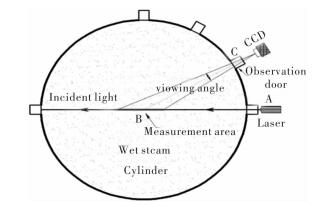
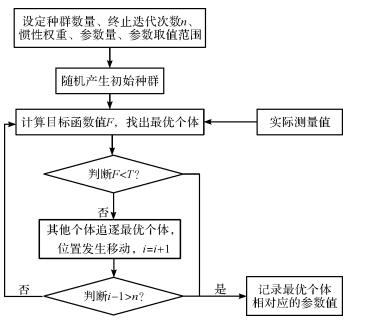
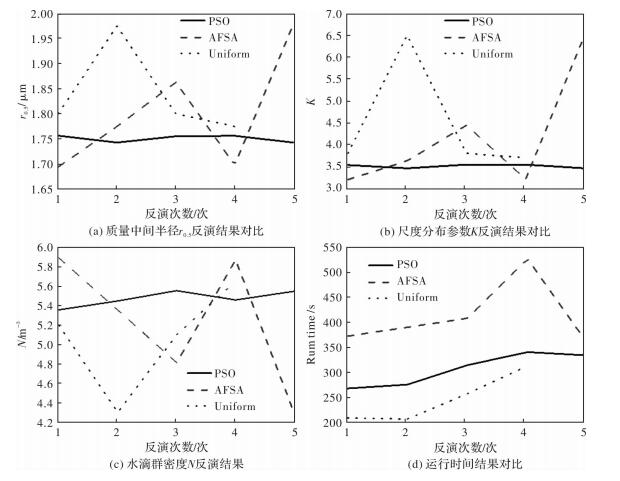
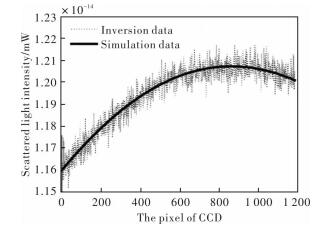
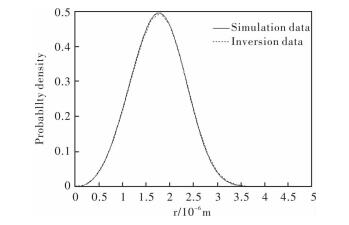


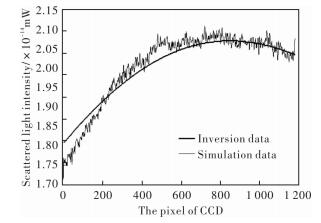

 陕公网安备 61011302001501号
陕公网安备 61011302001501号 